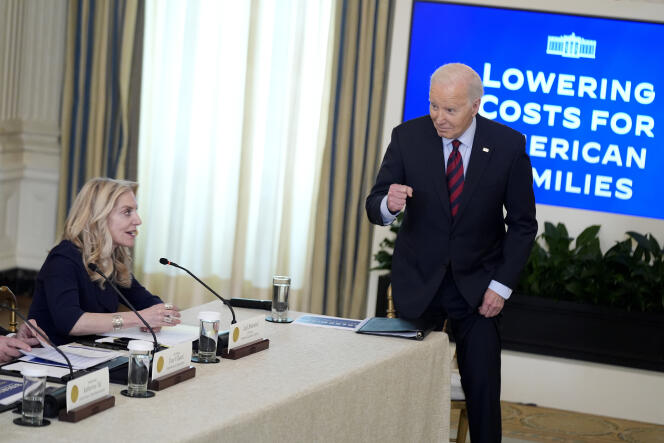


Ahead of Joe Biden's first address to Congress, in April 2021, an opinion piece in the Wall Street Journal ran with the title: "America voted for a rest, not a revolution." America thought it had elected a soothing old man, but beneath this faux transitional pope lurked a revolutionary who wanted to rebuild America, with his Build Back Better plan.
"Elected as Not Trump, Joe Biden aspires to be the second incarnation of Franklin Delano Roosevelt [president from 1933-1945, the father of the New Deal who transformed America after the 1929 crisis]," wrote the business daily's commentator. Comparisons could also be made with Lyndon B. Johnson (1963-1968), John F. Kennedy's underrated successor because of his involvement in Vietnam, but who passed some of the biggest social and anti-segregation laws in the US.
Three years on, as Biden delivers the final State of the Union address of this presidential term on Thursday, March 7, the Wall Street Journal's piece proved prescient. Biden has by no means reconciled an America torn between Trumpists and Democrats. On the contrary, he has profoundly changed it. Or rather, America has changed profoundly under his tenure, and the point is to distinguish between what can be credited to the Democratic president and what was brought about by the markets.
With six months to go before the election, the economic picture is bright. Inflation has fallen back to 1.8%, after peaking at 9.1% in June 2022; unemployment is at or near record lows at 3.7%; real wages are rising, especially at the lower end of the scale; the country is producing more oil than ever, funding a huge investment plan in energy and microprocessors, and throwing its weight behind artificial intelligence, sending Wall Street soaring.
No one is talking about secular stagnation anymore, as they did in the 2010s. And the term "Rust Belt," referring to the deindustrialized states that got Donald Trump elected in 2016, has disappeared from the newspapers.
First observation: America is becoming more industrial again. Trump dreamed of it, but Biden made it happen. The president has succeeded in implementing an unprecedented industrial policy, with a massive program of subsidies for semiconductors and renewable energies. The spending, mostly in the form of tax credits, has yet to flow, but the pump has been primed with massive investments in renewables and semiconductor plants worth between $10 billion and $40 billion, built by TSMC, Samsung, Intel and Micron. Asian and European investors are flocking to the US domestic market, attracted by subsidies and cheap energy.
You have 53.18% of this article left to read. The rest is for subscribers only.
